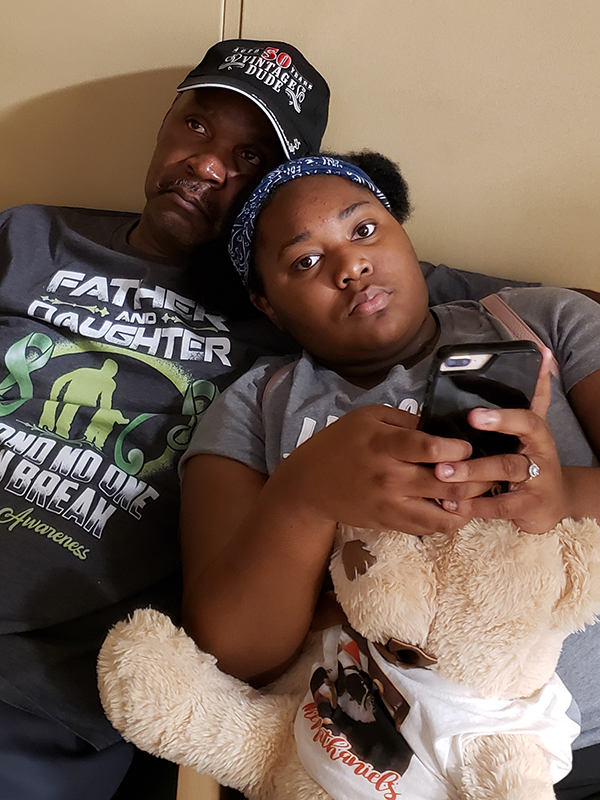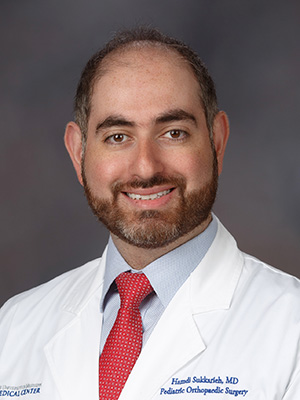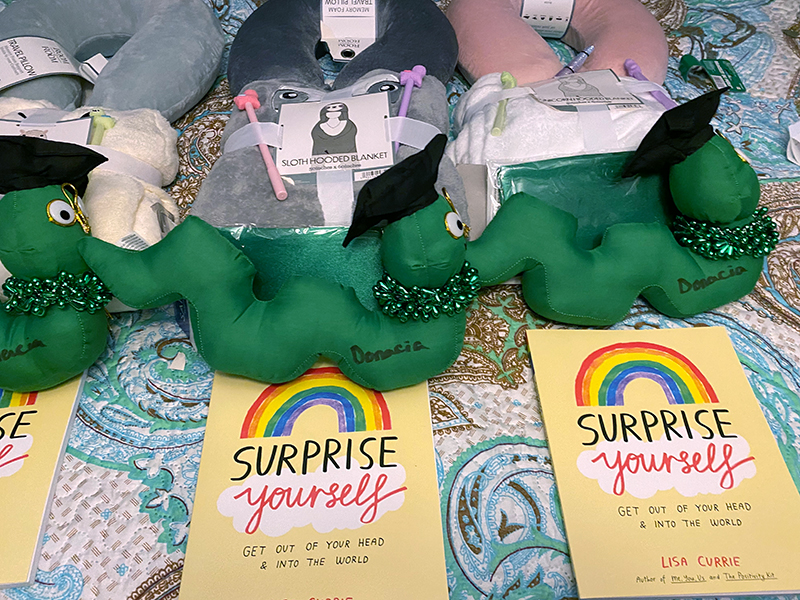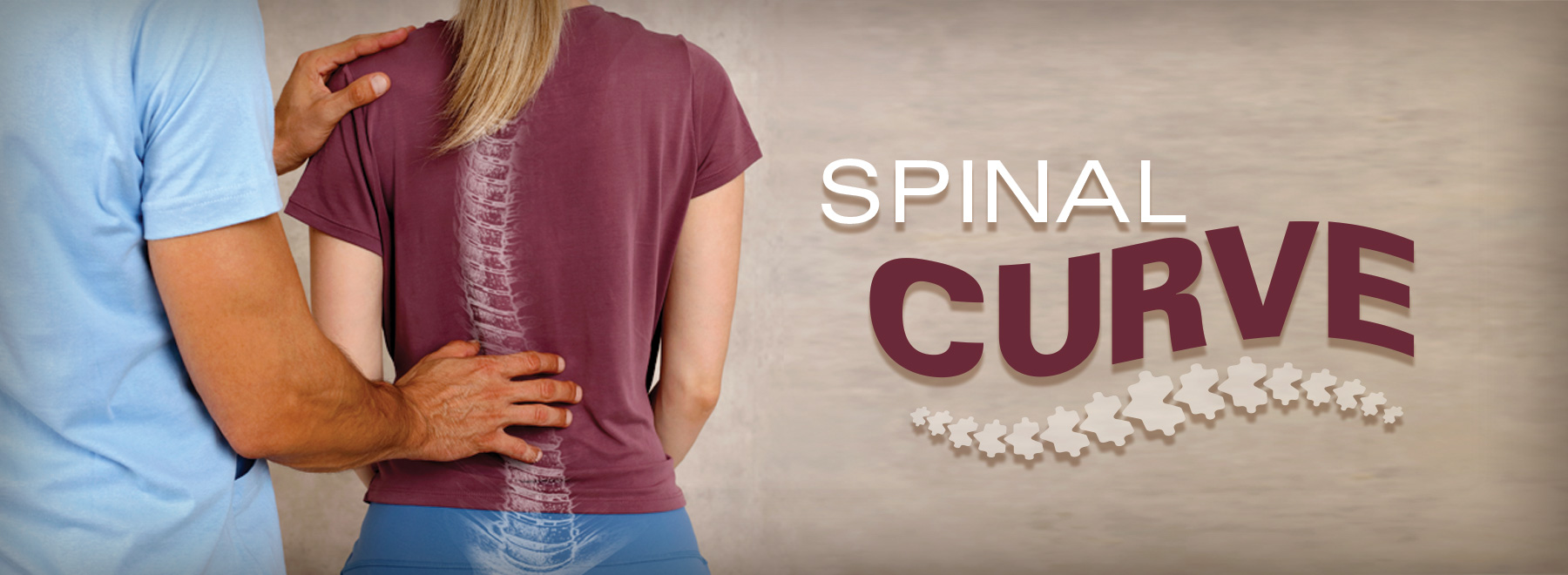Signs of scoliosis should not be ignored
Donacia Nathaniel is a healthy McComb High senior today, more than three years after the beginning of what she and her family call their scoliosis journey.
The journey started in 2018, when Donacia called her mother, Keonnia Nathaniel, from school.
“She told me it felt like she had been hit in the chest and that it was hard to breathe,” Keonnia Nathaniel said. “I thought it might be an upper respiratory problem, so I took her to the closest emergency department.”
Donacia’s flu and strep tests came back negative, but a chest X-ray showed she had developed scoliosis, a curvature of the spine that appears in one in 25 adolescent girls and one in 200 teen boys.

A referral to a pediatric orthopaedic surgeon at Children’s of Mississippi showed Donacia had a curvature that needed surgical correction. After careful planning and observation, she had a six-and-a-half-hour surgery that straightened her spinal curves with 10 screws on either side of two rods.
“She told me, ‘Mom, I’m scared,’ and I was, too,” Nathaniel said. “I encouraged her to write down what she was feeling because it might help others with scoliosis.”
Two later surgeries helped in leg growth to support her scoliosis surgery.

Donacia’s orthopaedic surgeon, Dr. Hamdi Sukkarieh, assistant professor of pediatric orthopaedic surgery at the University of Mississippi Medical Center, said Children’s of Mississippi treats a substantial number of patients with diverse spinal conditions.
“These range from the most common adolescent idiopathic (AIS) cases to neuromuscular and syndromic scoliosis,” Sukkarieh said. “We see children who have been referred to us for suspicion of a spine deformity so that we may confirm or rule that out. In addition, we see the less common forms of scoliosis as well.”
Early-onset scoliosis occurs in children younger than 9, with infantile scoliosis affecting children younger than 3. Juvenile early-onset scoliosis occurs in children 4 to 9 years old.
Other spinal conditions seen by Children’s of Mississippi experts include:
- Kyphosis, or an increase in the bending of the spine to the side
- Spondylolisthesis, or slipped vertebral bones
- Spondylolysis, or a lower-back defect
- Back pain
Children who have scoliosis are not limited by their condition, and most do not feel pain because of it, Sukkarieh said. “They remain active and are able and allowed to participate in regular activities.”
The problems come later, as the scoliosis progresses over time, he said. “Large scoliosis deformities that continue to progress may limit the child by offsetting their truncal balance, causing pain due to abnormal and asymmetric muscle stretches and may affect the lung and heart function in the very severe deformities.”
Signs of scoliosis such as uneven shoulders or leaning to one side shouldn’t be ignored, he said, since the condition can worsen over time.
Treatment of spinal conditions have advanced. “The greatest advancements over the years have really been through our better understanding of the natural history, evolving treatment options, and true natures of these deformities, especially in early onset scoliosis," he said.
Not every scoliosis case requires surgery like Donacia’s. Scoliosis can be treated through a variety of techniques that are tailored to each patient’s condition and age.
Mehta casting is a technique that is utilized to control curvatures in children who are too small to have anything implanted in them.
Bracing can treat most scoliosis curvatures of 25 to 40 degrees.
“Bracing continues as long as it is preventing the curve from getting worse and as long as there is remaining growth,” Sukkarieh said. “Some are worn overnight for 8-10 hours while others are worn for 20 hours a day.”
Growing rod spine surgery for early onset scoliosis has also been advanced with the introduction of rods that can be lengthened with a magnetic field that operates a lengthening mechanism inside that rod, thus removing the need for lengthening surgeries.
A technique recently approved by the FDA is a fusion-less surgery that allows scoliosis correction over time while maintaining motion across the involved portions of the spine. This new technique, vertebral body tethering, is performed through the chest cavity rather than the back. “Patient selection in this technique is very crucial for success as not every scoliosis patient is a suitable candidate for it,” he said.
Surgery for the most common form of scoliosis, AIS, usually takes about three to four hours, depending on the condition’s severity. Advances in anesthesia management allow most patients to go to a regular hospital room instead of intensive care after surgery. Most patients can be discharged after two days in the hospital.
“The implants that are used in the surgical treatment of scoliosis allow for better correction of the curves involved and the rib hump without the need for post-operative bracing,” Sukkarieh said.
“They’re asked to follow up three weeks after discharge,” Sukkarieh said. “Meanwhile, they’re recovering at home and improving their function.”

After three months, patients can start doing low-impact exercises. Six months after leaving the hospital, patients can return to normal activities including contact sports.
Post-surgery, Donacia is thriving, with grades that earned her a scholarship. The family has even made scoliosis care packages for other patients, each including a blanket, neck pillow and journal among other items.
“We’re grateful for Dr. Sukkarieh, our care team at Children's of Mississippi, and our team of friends and family at home,” Nathaniel said. “They helped us throughout our scoliosis journey, and we hope we can help others on that journey.”
The above article appears in CONSULT, UMMC’s monthly e-newsletter sharing news about cutting-edge clinical and health science education advances and innovative biomedical research at the Medical Center and giving you tips and suggestions on how you and the people you love can live a healthier life. Click here and enter your email address to receive CONSULT free of charge. You may cancel at any time.



